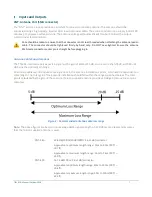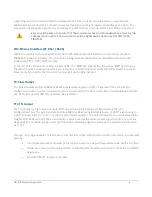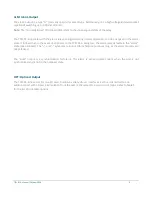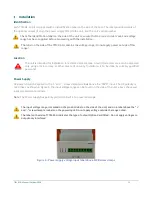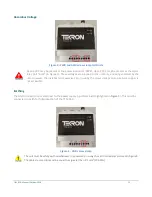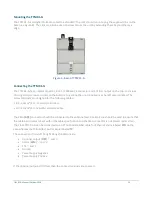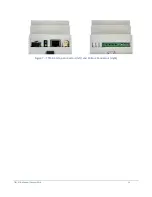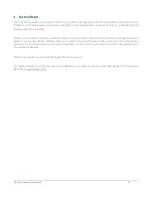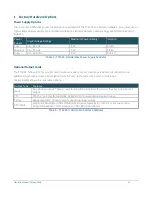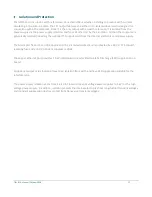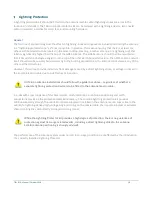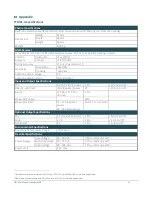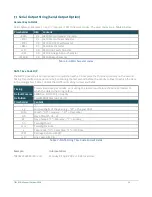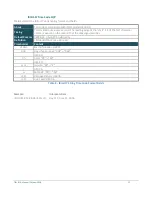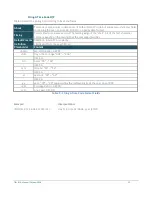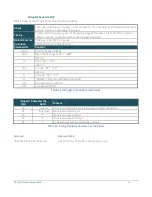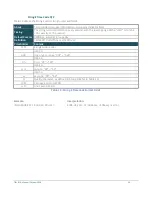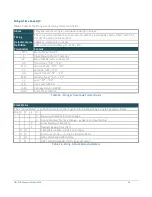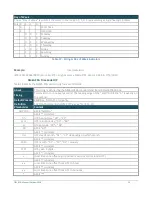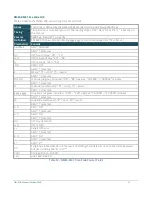
TTM 01-G Manual / October 2018
20
Serial Output String (Serial Output Option)
General Key to Fields
Fields between brackets (‘<’ and ‘>’) represent ASCII character codes. The used codes are in Table 6 below:
Placeholder
HEX Content
<SOH>
01 ASCII Start of Header character
<STX>
02 ASCII Start of Text character
<ETX>
03 ASCII End of Text character
<BEL>
07 ASCII BEL character
<LF>
0A ASCII Line Feed character
<CR>
0D ASCII Carriage Return character
<SPACE>
20 ASCII Space character
Table 6 - ASCII character codes
NGTS Time Code O/P
The NGTS time code is normally used in conjunction with a 10 ms pulse that finishes precisely on the second.
Timing Transmitted once per minute. Sent during the last second before the minute rollover to which the data
in the string refers. Table 7 details the NGTS serial string format and fields.
Timing
Transmitted once per minute. Sent during the last second before the minute rollover to
which the data in the string refers.
Default Comms
9600 bps, 8-bit ASCII, no parity
Definition
TyyMMDDWhhmmx<CR><LF>
Placeholder
Content
T
"T"
yy
Last two digits of the year: e.g., “21
” = the year 20
21
MM
Month: “00” = January … “12” =
December
DD
Day of Month: 01…31
W
Day of week: “1”=
Monday … “7”=
Sunday
hh
Two-digit hour
mm
Two-digit minute
x
Time mode: ”0” = Local time, “1” = UTC time
<CR>
Carriage Return: HEX 0D
<LF>
Line Feed: HEX 0A
Table 7 - NGTS String Time Code Format Fields
Example:
Interpretation:
T020422112340<CR><LF>
Monday 22 April 2002 – 12:34 local time


